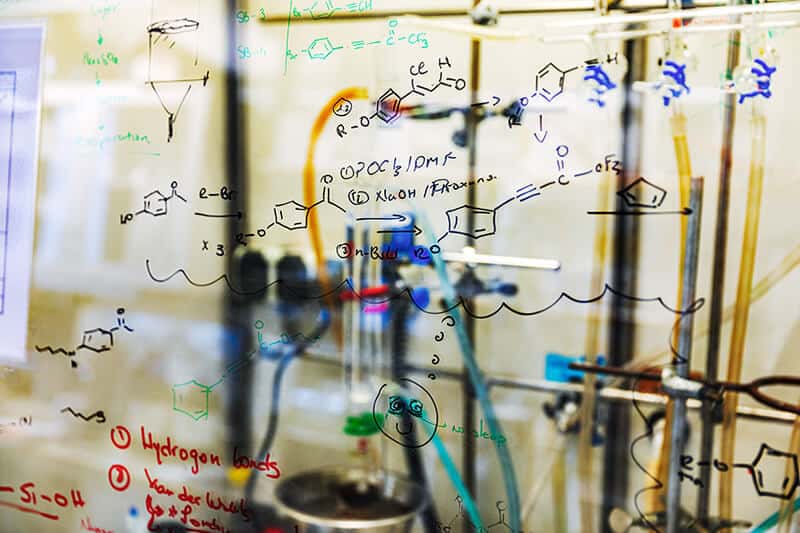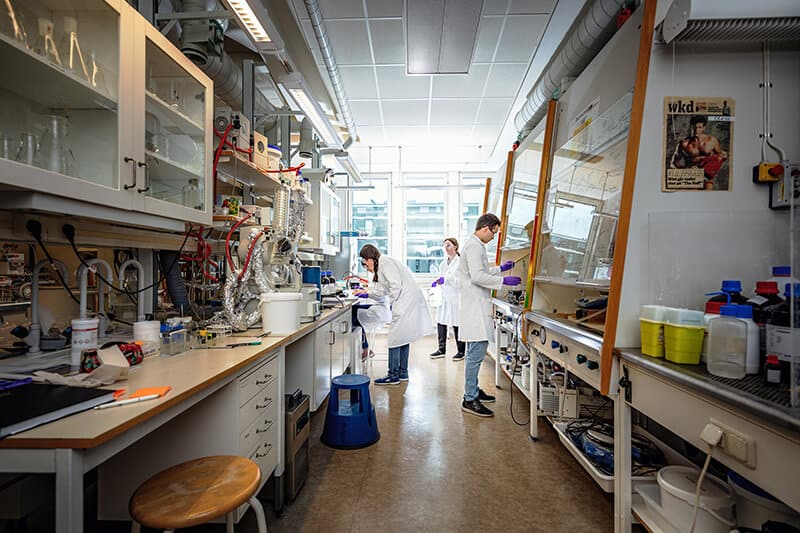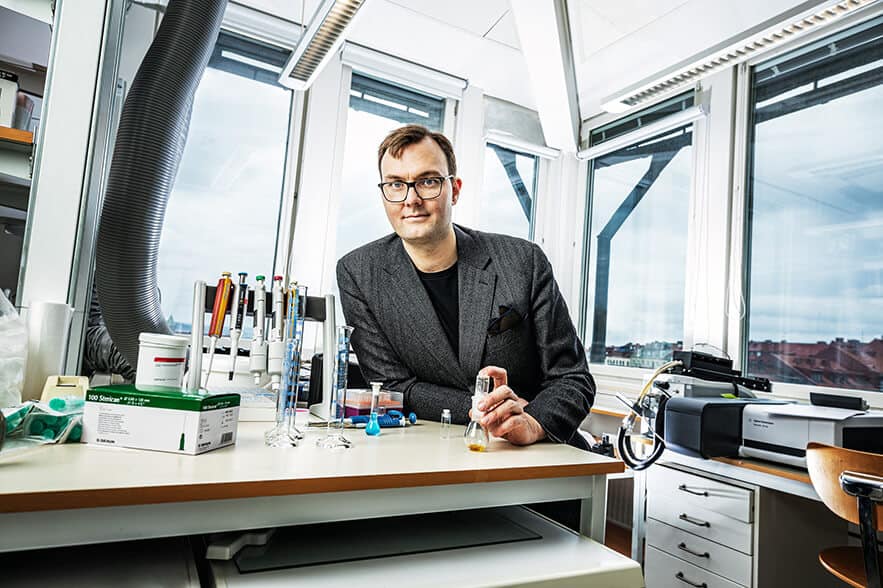Professor Moth-Poulsen of the Chalmers University of Technology, Sweden has just completed groundbreaking work on harnessing heat from the sun and being able to retain it for decades. We have the opportunity to interview him and know more about his invention.
Professor, first of all please tell us about the liquid you have developed.
This is a new type of material that can capture solar energy and convert it into stored chemical energy. This means that we can store the energy for long periods of time and release it “on-demand” as heat where and when we need it. The material is based on a functional molecule that is absorbing sunlight, and when the sunlight is absorbed, the molecule changes shape (isomerizes). In the new form, the molecule can be stored, and then, later, it can change shape back to the original molecule and release the stored energy.

What and how are going to be the applications for the heating of indoor spaces and vehicles?
There is still some way to go before we will see real world applications with this material, but we think that it can be used in places where compact energy storage and local heat delivery is needed. One area is windows and cars, where we often have challenges with too much heat during the day, and loss of heat during the nighttime. We would like to use our materials to improve thermal comfort in houses and cars.
Another application area is heating for industrial application such as production of other materials.
When do you envisage the product will be available?
It depends on a number of factors, one is which resources we can attract to help us develop the materials. Another is if we can get help from skilled collaborators and partners in academia and industry, and the last one is if we are creative and smart enough to solve practical challenges such as long term stability, performance and cost.
What are the expected costs towards, let’s say, heating of an average house?
That we don’t know yet, but of course cost is important to consider. If you want people to use a new technology, it has to be affordable.
How does one switch off during the summers?
There is no need to switch off during summer, if e.g. applied to windows, it will still contribute to regulating the temperature.
How soon do you think your product will be available to the average consumer?
It is hard to say exactly, but we are at the moment making detailed development plans, hopefully in 3.5 years we will have the first products close to market.

Please tell us about your growing up years and those who inspired you?
I grew up near Copenhagen, Denmark, together with my parents and brother and sister. As a child, I did several extra-curicular activities such as playing music and sailing. I liked going to school, but I didn’t know until late in high school what should be the focus point of my education and career. In highschool, I had several good teachers, one of them was Kurt Nielsen, who was an inspirational Chemistry teacher. He motivated me to take the test for the Chemistry Olympics, where I in 1997 qualified to participate as one of 4 danish students to participate in the Montreal IChO. This event was quite defining for me, and lead to me deciding to study chemistry at the University of Copenhagen. At University of Copenhagen I had several good study friends and excellent teachers, Jørn B. Christensen and Thomas Bjørnholm were my supervisors, and both inspired me in different ways. When I later continued my career at UC Berkeley, prof. Rachel Segalman and prof. Peter Vollhardt were great supervisors and mentors both scientifically and on the more personal level.
How did you decide to become a leading figure in chemistry?
I do not see myself as a leading figure, I am happy about my job, and love to work with creative students and colleagues. I think it is very inspiring to see how far a small dedicated team of people can go if they put their minds to it.
Our readers are mainly the youth in many parts of the world who look up to achievers such as you for inspiration. A word of advice for them?
Through my study years, I always had “development activities” for myself outside the normal university life. For some years, I played music with a band and learned a lot from the people with different backgrounds. I later did competitive freediving which taught me how to breathe and how to perform and relax at the same time. I think that it is nice to have goals outside your professional life, since sometimes you face challenges in one aspect and then your other goals can help you with a different perspective. Today this different perspective comes mainly from my family and 3 small children. I don’t know if this is a good advice, but this is what worked for me.
Professor Kasper Moth-Poulsen heads the department of chemistry and chemical technology at the Chalmers University of Technology. He has risen to worldwide fame through his trailblazing work. You can follow him on Twitter @KMothPoulsen.
Photos: Oscar Mattsson | Chalmers University of Technology
Support us!
All your donations will be used to pay the magazine’s journalists and to support the ongoing costs of maintaining the site.
Share this post
Interested in co-operating with us?
We are open to co-operation from writers and businesses alike. You can reach us on our email at [email protected]/[email protected] and we will get back to you as quick as we can.









